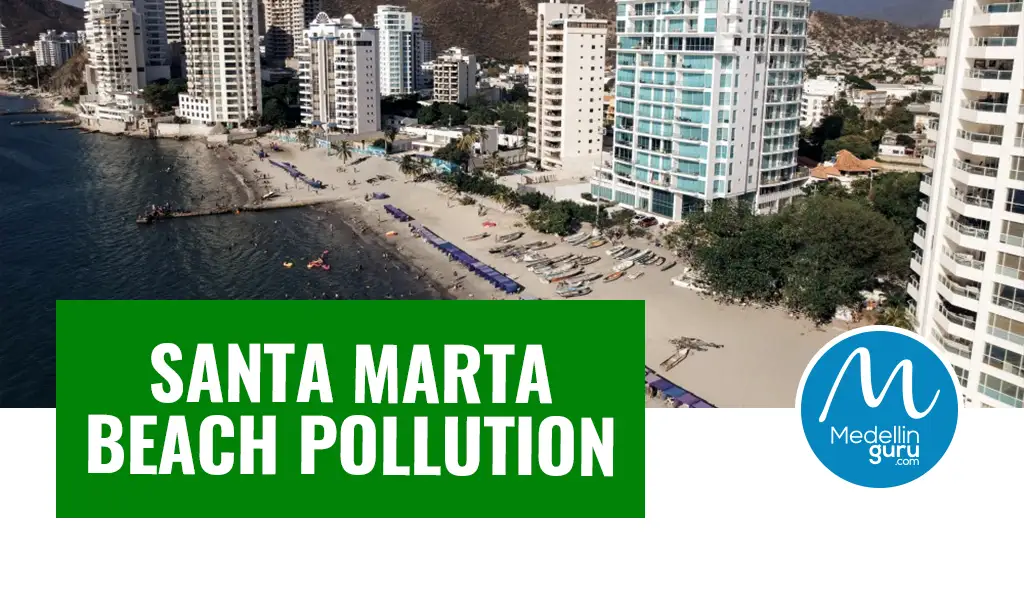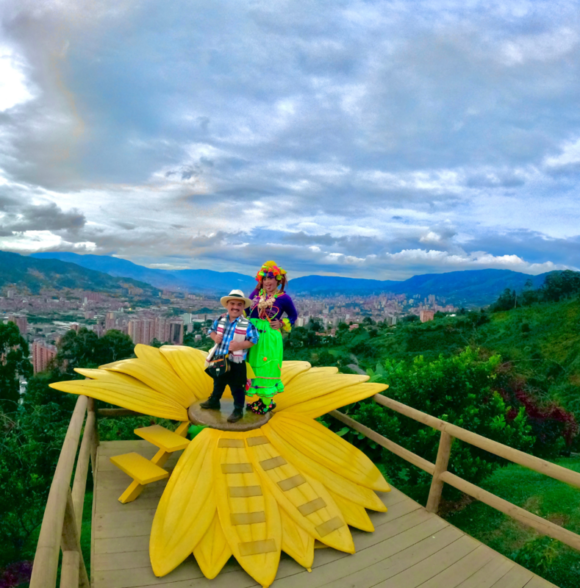Santa Marta, one of the cities that receives the most tourists each year and which charms locals and visitors alike with its beautiful beaches—such as Taganga, Playa Blanca, Playa del Rodadero, Playa Cristal, and Cabo San Juan del Guía (Tayrona Park)—is again facing questions about the quality of its waters, after reports by tourists claiming to have experienced allergic reactions after swimming in the bay. This highlights once more a problem that has affected the city since its founding: the lack of a proper water supply system and the unfortunate disposal of human waste into the Santa Marta beach, polluting it and harming both residents and visitors.
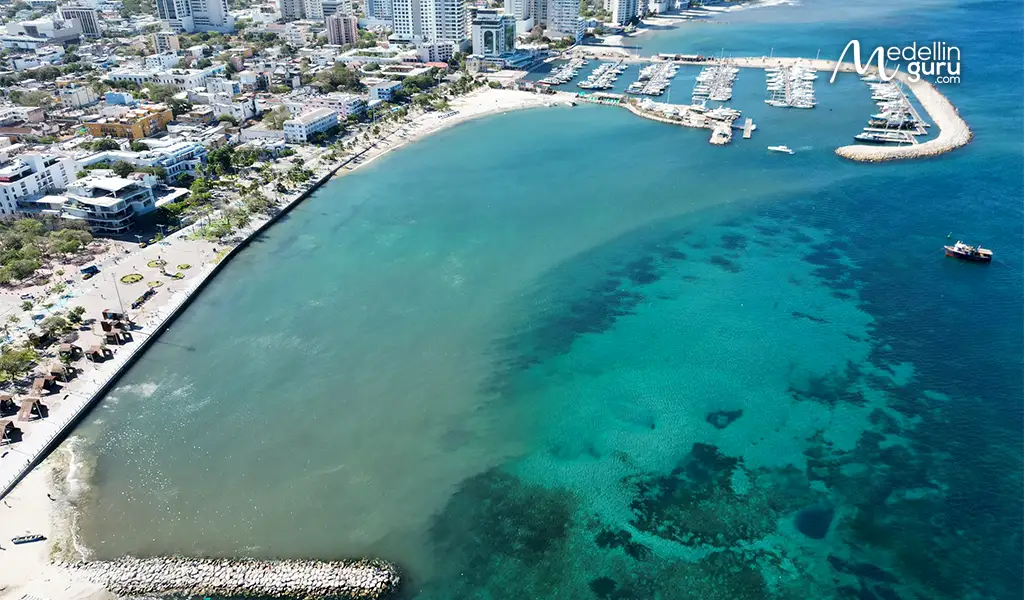
What Was The Matter with Santa Marta Beach?
On July 9, Santa Marta once again became a national trend after several tourists reported on social media having suffered irritations and allergies after swimming in the sea. They began to share testimonies and photographs of swimmers, especially in El Rodadero and Puerto Gaira, who presented skin lesions, raising concern about the water quality in this traditional tourist destination in the Colombian Caribbean.
Mishell Dayana Pedrozo, Samaritan mother, reported to Caracol Radio about her experience after going to the beach on July 6th with her daughters and experiencing, a couple of hours after spending an afternoon at the Puerto Gaira beach, a severe allergic reaction where a prominent outbreak, hives, redness, intense itching, and a burning sensation on the skin became apparent.
Pedrozo explained that “We left. I was sitting on the sand, they went into the sea. Up until then, everything was fine. Well, like everyone, I went to enjoy the water, so I went in to swim with them. And at that moment I felt my skin itching and I said, 'Honey,' meaning my husband, 'my skin is burning, it's itching, it's bothering me.'”
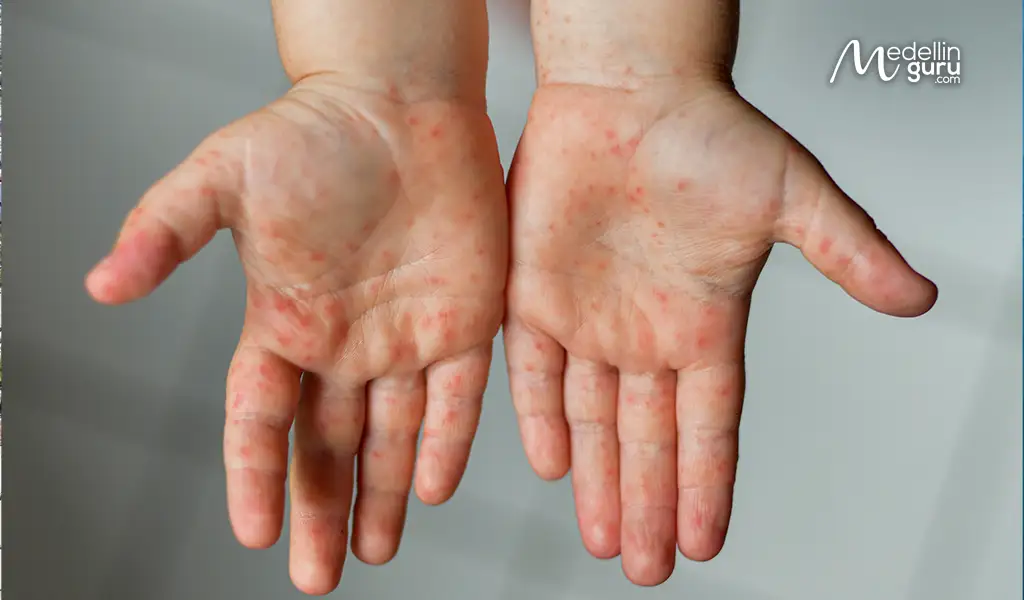
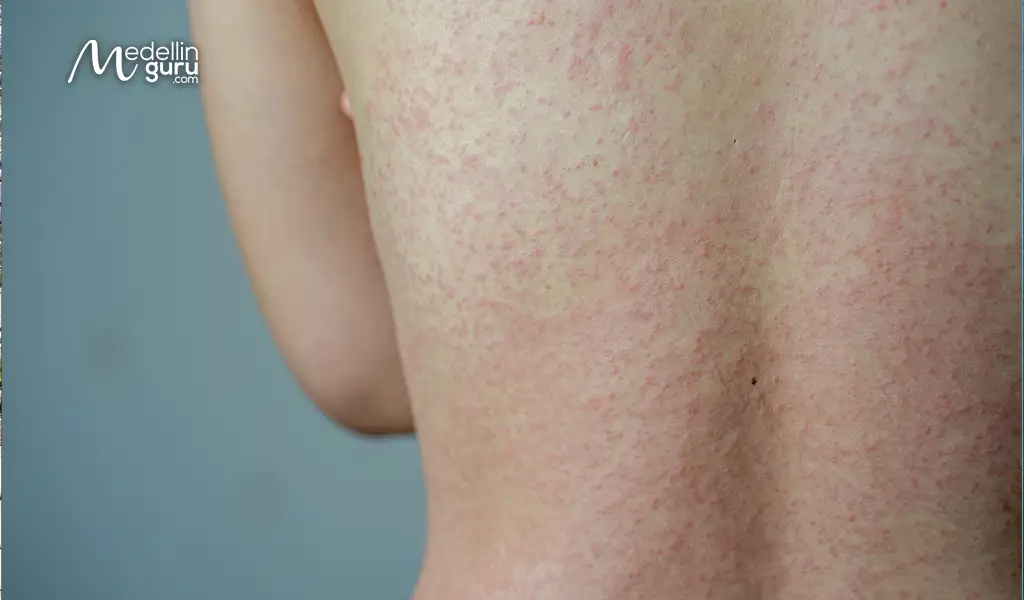
According to Caracol Radio, the affected individual initially believed it was a common allergic reaction, but as her case spread on social media, she received messages from other families who, during the same period and at nearby beaches, experienced similar symptoms.
"A mother told me that her little girl had a fever, that she was vomiting as a result of all that... a neighbor also told me that exactly the same thing happened to them on El Rodadero beach," Pedrozo described in his communication with the media.
What Did the Authorities Say About the Santa Marta Beaches?
The Secretary of Health of Santa Marta, Jorge Lastra, announced in an interview with Caracol Radio how this situation was handled. The official explained that, after the cases became known, an inspection, surveillance, and control protocol was immediately activated, in conjunction with environmental authorities such as Corpamag (Magdalena Autonomous Corporation) and Invemar (José Benito Vives de Andréis Institute of Marine and Coastal Research).
“Of the five minors who appeared on social media, only two stated they had been in contact with the sea. In those cases, jellyfish stings were identified, a stinging marine species that usually appears at certain times of the year,” Lastra explained.
Furthermore, the official stated that the most recent study conducted by the aqueduct company Essmar, currently under intervention by the Superintendency of Public Services, indicates that the water at mandatory sampling points complies with regulatory standards.
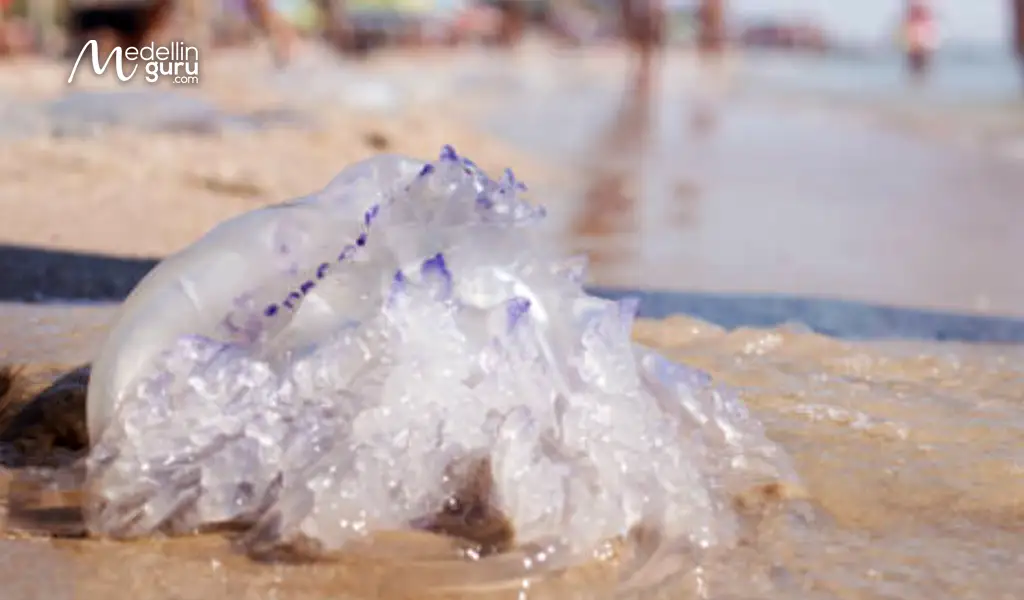
Furthermore, despite the alarm generated on social media, according to Lastra, there is no medical or scientific evidence directly linking exposure to seawater to the reported skin reactions. “There is no causal relationship between seawater and the symptoms. We live in an area of high biological exposure, with risks inherent to a tropical environment. Cases of dermatitis can also be caused by insect bites or contact with marine vegetation,” added Lastra.
However, he acknowledged that there are precedents for similar situations, such as a case reported months ago by another tourist. Despite this background, the District states that no direct correlation has been established between these effects and the quality of the seawater.
Is There Any Structural Problem Behind This Situation On Santa Marta Beach?
As we mentioned at the beginning, despite Santa Marta being one of the country’s main cities and attracting the most tourists, the city does not have a decent sewage system, harming the sea waters by receiving human and biological waste from its inhabitants. Precisely, when asked about the historical complaints of wastewater discharge into Santa Marta bay, Lastra admitted that there is a structural problem in the city’s sewage network, especially during times of operational crisis at the treatment plants.
"In April, there was a specific crisis due to failures in the El Roble Norte plant, which generated a discharge that affected water quality at that time. But that episode was transitory, not constant," he stated.
The Secretary also highlighted that the administration of Mayor Carlos Pinedo already has infrastructure works underway to address this problem, especially after the signing of an inter-administrative agreement between Minvivienda, the ANI, the National Planning Department (DNP), and the Mayor’s Office of Santa Marta to solve the water and sewage problem that has affected the city’s population for several decades. The objective of this agreement is to update the feasibility studies for the technical, legal, and financial structuring of a Public-Private Partnership (APP) project, which includes the design, construction, operation, and maintenance of Santa Marta’s water and sewage systems.

Thus, while this project is being carried out and given the enormous concern for the beaches of Santa Marta, the District reiterated that water quality monitoring in resorts is constant. So far, there is no evidence of contamination or presence of harmful elements to health, also providing some recommendations for those planning to enjoy the sea in Santa Marta:
- Rinse yourself with fresh water as soon as you get out of the sea.
- Take off your swimsuit as soon as possible and wash it thoroughly.
- Use soothing creams or marine repellent if you are prone to allergies.
Likewise, last Wednesday, July 17, the Delegation for Environmental, Mining, Energy, and Agrarian Affairs of the Procuraduría General de la Nación requested several environmental and health entities in the district of Santa Marta to carry out an immediate technical review of the marine-coastal environmental conditions, after reports of alleged adverse effects on the skin of of bathers. These requests were made to the District Administrative Department of Environmental Sustainability (DADSA), the Regional Autonomous Corporation of Magdalena (CORPAMAG), the Institute of Marine and Coastal Research (INVEMAR), and the District Health Secretariat.
The areas where the Procuraduría General de la Nación requested a review of environmental and sanitary conditions are key sectors of the Santa Marta coastline, such as the Bay of Santa Marta, El Rodadero, Taganga, Playa Salguero, Puerto Gaira, Pleno Mar, and Bello Horizonte.
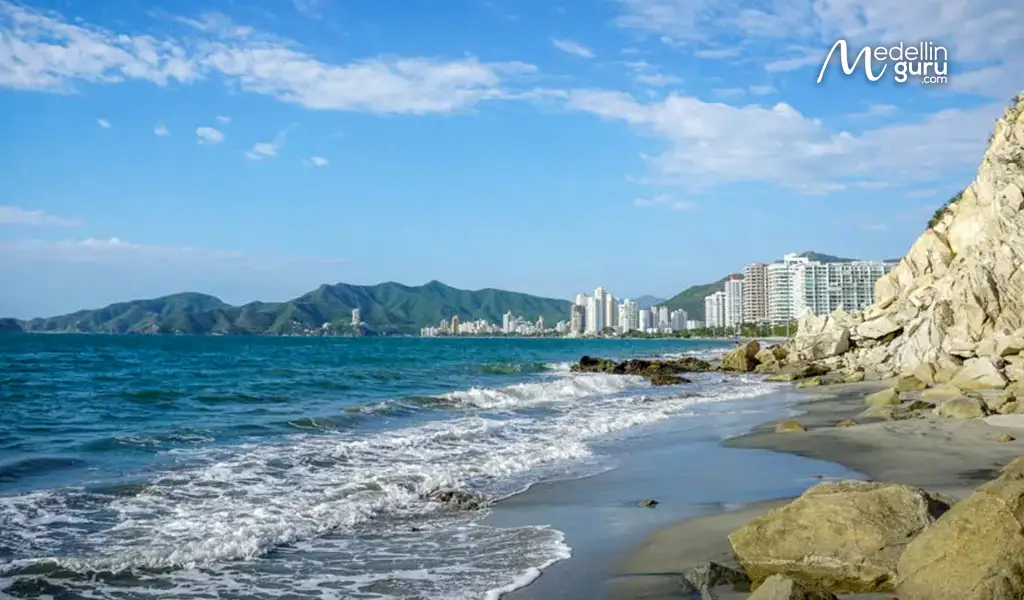
It is important for all expats planning to explore the enchanting beaches of Santa Marta and enjoy its culture, gastronomy, and tropical climate to prioritize health and well-being, taking into account environmental, natural, and even chemical differences, which can result in health issues for their loved ones or even personally. It is better to be prepared, alert, and well-supported by a health policy that is reactive, fast, and efficient, adapted to medical emergencies and offering partnerships with health centers for the best possible care that can safeguard your well-being and that of your loved ones while enjoying the coastal beauty of Colombia.
Click on the green button to get the health policy through the partnership with EG Insurance
Medellin Guru's safety and security series
Safety is the biggest concern of foreigners visiting Colombia or planning to move to Colombia. So, we have a series of 18 popular articles about safety and security in Colombia:
- Is Medellin Safe? U.S. Embassy Colombia Talks About Security for U.S. Citizens
- Emergency Directory Guides to Ensure Your Safety in Colombia
- Is Colombia Safe? Colombia Security and Safety Tips
- Is Medellín Safe? Medellín Security and Safety Tips
- How to Travel and Live in Colombia Safe as a Foreigner
- Colombia Travel Health Insurance: A Guide for Expats and Nomads
- How to Obtain 2 Years of Health Coverage for a Colombian Visa
- Migración Colombia alert: No entry for foreigners with Angel Watch reports
- What are the Safest Neighborhoods in Medellín and the Aburrá Valley
- 5 Best Neighborhoods in Medellín: A Guide to Choosing a Neighborhood
- New Airbnb Policies for Hosts in Colombia
- Medellín Robbery: Expat Experience Being Robbed at Knifepoint
- Colombia Gun Laws: Is it Legal to Have a Gun in Colombia?
- Scopolamine: The Realities of Devil’s Breath in Colombia
- Colombia Protests: Tips for Foreigners to Stay Safe During Protests
- Is Bogotá Safe? Bogotá Security and Safety Tips
- Is Cartagena Safe? Cartagena Security and Safety Tips
- Is Cali Safe? Cali, Colombia Security and Safety Tips
- Is Santa Marta Safe? Santa Marta Security and Safety Tips
- Is Pereira Safe? Pereira, Colombia Security and Safety Tips
- Is Manizales Safe? Manizales Security and Safety Tips
- Is Bucaramanga Safe? Bucaramanga Security and Safety Tips
- Is Barranquilla Safe? Barranquilla Security and Safety Tips
The Bottom Line: Santa Marta Beach Pollution Claims Intensify with Tourist Illness Reports
In summary, while Santa Marta authorities maintain that seawater quality meets regulatory standards and that reported skin irritations are often due to natural factors like jellyfish stings or insect bites, they acknowledge a persistent structural issue with the city’s sewage system. This problem, highlighted by past discharge crises, is being addressed through new infrastructure projects and a public-private partnership aimed at comprehensive water and sewage system improvements. Tourists are advised to take precautions such as rinsing after swimming and using soothing creams, as investigations into the causal link between seawater and reported illnesses continue.
Medellin Guru Social media
Be part of our community. Find out about news, participate in events and enjoy the best of the city.


